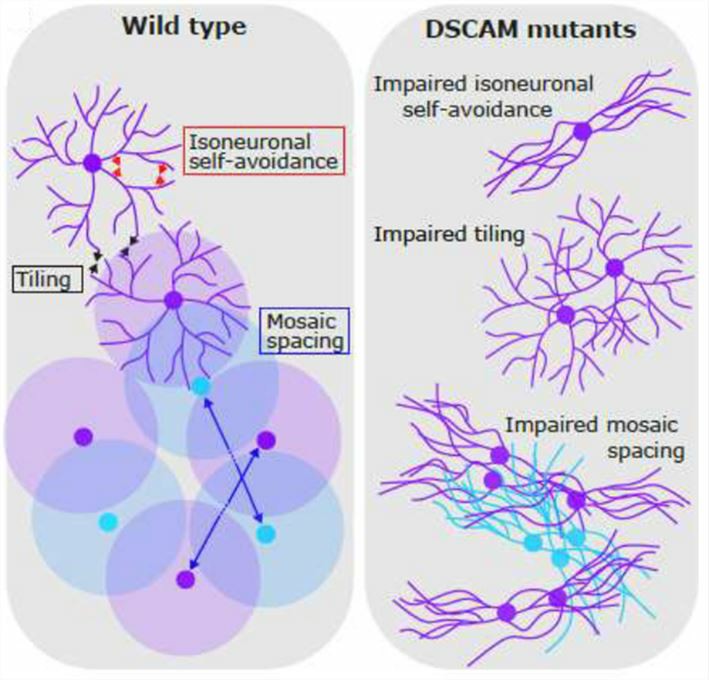DSCAM and Associated Diseases
Gene therapy is a new approach based on genetic engineering techniques that use exogenous genes to target key disease targets. Down syndrome cell adhesion molecule (DSCAM) is essential for cortical development and neural network formation as a neuronal adhesion molecule. At Creative Biolabs, we have the most dedicated research team and extensive project experience to provide gene therapy research services for DSCAM-related neurodevelopmental disorders, including Down syndrome (DS), epilepsy, and autism.
Overview of DSCAM Gene
DSCAM is a neuronal adhesion molecule found in patients with DS. It is located at 21q22.2-22.3 of the human gene and is composed of ten immunoglobulin domains, six repeat type Ⅲ fibronectin, one transmembrane domain and the c terminus of the cytoplasmic tail, belonging to the immunoglobulin superfamily. Two types of lateral homologs, DSCAM and DSCAM-like-1, are also widely expressed in the central nervous system of vertebrates, including hippocampus, cerebellum, and spinal cord.
DSCAM is essential for the development and proper functioning of the nervous system, participating in functions such as the formation and maturation of neurons and the formation and maintenance of neural networks composed of axons, dendrites and synapses. As a cell adhesion molecule, DSCAM can block the function of stronger cell adhesion molecules, resulting in reduced adhesion of migrating neurons in the cortex, thus enabling smooth crossing of previously reached neurons to stop at the limbic layer of the cortex, increasing the longitudinal distance between neurons and the thickness of the cortex. Thus, the study of DSCAM expression facilitates a better understanding of developmentally related disorders such as DS, autism and early-onset epilepsy.
DSCAM-associated Neurodevelopmental Disorders
When DSCAM is overexpressed, increased transcription and translation of DSCAM within the dendrites of hippocampal neurons induced by N-methyl-D-aspartate (NMDA) inhibits dendritic branching, leading to DS pathogenesis with defective dendritic and synaptic shaping and impaired migration as the primary pathology. Similarly, studies have demonstrated a correlation between the overexpression of DSCAM in drug-resistant epilepsy patients and their abnormal neuronal migration, which is mediated by the regulation of neuronal radial migration by NMDA receptors. In turn, reduced DSCAM expression results in neurons remaining in deeper cortical layers, while the density of DSCAM neurons in destination cortical layers II/III is significantly reduced, resulting in impaired cortical development and the induction of autism with social impairment as a typical symptom. In addition, DSCAM mutations directly lead to dislocations of neurons in the cortex and the disruption of synaptic connections between neurons via synapses. Typically, triple mutations in DSCAM result in failure of activation of the downstream gene PAK1 and neuronal connectivity dysfunction, and this triple mutation in DSCAM, which results from meiotic errors in oocytes and abnormal fibronectin formation, is the main genetic cause of DS.
 Fig.1 Schematic illustration for DSCAM deficiency on spine maturation.1
Fig.1 Schematic illustration for DSCAM deficiency on spine maturation.1
DSCAM expression directly affects neuronal migration, synapse formation and cortical development, providing fundamental structural roles for normal nervous system function. Overexpression and mutation of DSCAM in DS and epilepsy, and attenuated expression in autism and social dysfunction suggest that DSCAM is an important target molecule for studying developmental disorders. Creative Biolabs provides comprehensive and timely research services in gene therapy related to DSCAM using genetic engineering techniques. Please contact us to let us know your needs.
Reference
- Lemieux, M.; et al. Role of DSCAM in the development of neural control of movement and locomotion. Int J Mol Sci. 2021, 22(16): 8511. Distributed under Open Access license CC BY 4.0, without modification.
